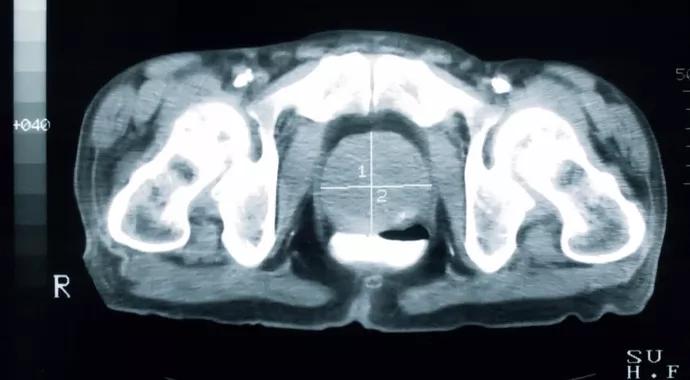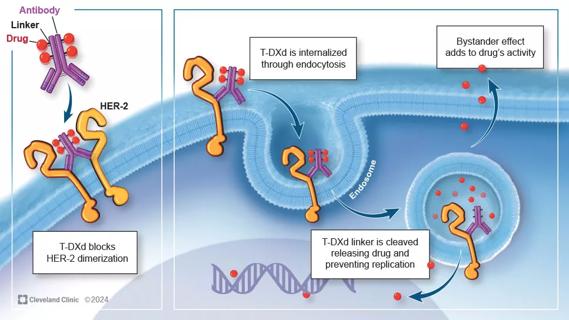SBRT and PBT could shape the future of treatment

Advertisement
Cleveland Clinic is a non-profit academic medical center. Advertising on our site helps support our mission. We do not endorse non-Cleveland Clinic products or services. Policy

Rahul Tendulkar, MD
During the past decade, two technologies have emerged that may change the future of external beam radiation therapy for prostate cancer – stereotactic body radiation therapy (SBRT) and proton beam therapy (PBT).
External beam radiation therapy has been utilized in the treatment of prostate cancer since 1904, less than a decade after Wilhelm Roentgen discovered radiation in 1895.
Numerous technological advancements in therapeutic radiation occured in the ensuing decades, including the discovery of cobalt-60, the development of the linear accelerator, the invention of the computed tomography scan, the utilization of beam modulation to shape radiation dose away from normal organs, and the incorporation of image guidance with real-time tumor tracking.
Dose-escalated, intensity-modulated radiation therapy (IMRT) with daily image guidance, delivered during several weeks of treatment, has been established as the current standard of care based on numerous publications demonstrating a superior toxicity profile and tumor control rate compared with older techniques.
SBRT and PBT are forms of external beam radiation that have theoretical advantages over IMRT.
As an alternate technique to deliver hypofractionated radiotherapy to the prostate, SBRT involves immobilization of the patient and the target to deliver high doses of precise radiation therapy. The treatment is typically delivered in five fractions, significantly shortening the overall treatment time compared with conventional IMRT, which can require up to nine weeks of daily sessions.
Advertisement
The rationale for using SBRT is based on radiobiologic studies that suggest that most prostate cancers have a low “alpha/beta ratio” and an enhanced therapeutic ratio when higher daily doses are used. In addition, SBRT may be more cost-effective and convenient for patients.
Due to the relatively recent adoption of SBRT in clinical trials, long-term outcomes data are now emerging and suggest a favorably low rate of late toxicities and similar efficacy to IMRT or other treatments for early-stage prostate cancer. Unfortunately, no randomized trials have been conducted to compare SBRT with other modalities.
PBT is a technology that has been used to treat prostate cancer since 1976. Protons are heavy charged particles with a very different radiation dose distribution compared with X-ray photon-based therapy.
Unique to PBT is the Bragg peak, which is the deposition of a burst of energy at the tail end of a proton’s range. This physical property allows for the relative sparing of the radiation dose to normal tissues beyond the Bragg peak, potentially reducing the toxicities to those organs.
Unfortunately, the theoretical advantages of PBT have not been clinically observed to date in the treatment of prostate cancer.
One large study utilizing the National Cancer Institute’s Surveillance, Epidemiology, and End Results database demonstrated that patients treated with PBT actually experienced more gastrointestinal (GI) toxicity compared with IMRT. This excess of GI toxicity may be explained in part by the lack of available methods to actively modulate the dose intensity of a proton beam (“active scanning”), which is yet another emerging technology itself.
Advertisement
Another potential barrier to the widespread adoption of PBT is the high acquisition cost of a proton beam unit, as well as the higher cost of a treatment course to patients and insurers. One study estimated the median Medicare reimbursement rate at 75 percent higher for PBT than for IMRT.
Fortunately, randomized trials comparing PBT with IMRT are underway, and these studies will be extremely valuable in determining the relative efficacy of each modality with regard to tumor control, toxicity, quality of life and cost.
In summary, both SBRT and PBT are encouraging technologies that will likely shape the future of radiation treatment delivery for prostate cancer. Ongoing clinical trials will be important to determine the relative value of these emerging technologies in the evolving healthcare economic climate.
Dr. Tendulkar is an associate staff member of Cleveland Clinic’s Department of Radiation Oncology.
Advertisement
Advertisement

First-of-its-kind research investigates the viability of standard screening to reduce the burden of late-stage cancer diagnoses

Global R&D efforts expanding first-line and relapse therapy options for patients

Study demonstrates ability to reduce patients’ reliance on phlebotomies to stabilize hematocrit levels

A case study on the value of access to novel therapies through clinical trials

Findings highlight an association between obesity and an increased incidence of moderate-severe disease

Cleveland Clinic Cancer Institute takes multi-faceted approach to increasing clinical trial access 23456

Key learnings from DESTINY trials

Overall survival in patients treated since 2008 is nearly 20% higher than in earlier patients